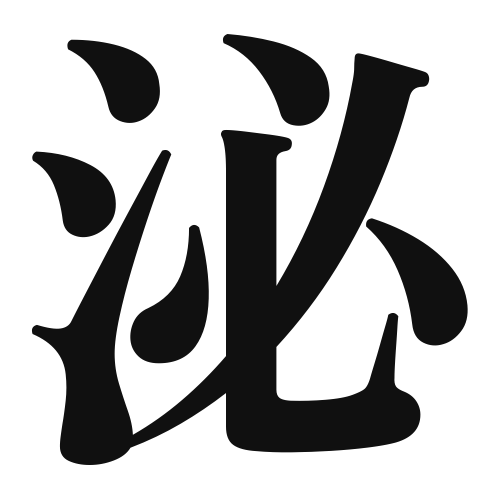1. Overview of Meaning
The kanji “泌” (hi) primarily means “to seep” or “to ooze.” It is often associated with the idea of liquid flowing or leaking out, particularly in a biological or physiological context.
2. Formation and Radical
Formation of the Kanji: The kanji “泌” is a phonetic-ideographic character (形声文字). It combines the water radical (氵) on the left, indicating a relation to liquid, with the phonetic component “必” (hi), which contributes to its pronunciation.
Radical: The radical of “泌” is the water radical (氵), which is commonly found in kanji related to water or liquids.
3. Examples of Usage
Common Words and Phrases: “泌尿” (hinyou) meaning “urinary,” and “泌乳” (hinyuu) meaning “lactation.”
Example Sentence in Daily Conversation: “彼は泌尿器科の医者です。” (Kare wa hinyouka no isha desu.) – “He is a urologist.”
4. Synonyms and Antonyms
Similar Kanji: “流” (ryuu) meaning “to flow,” which emphasizes the movement of liquid, while “泌” focuses more on the act of seeping or oozing.
Opposite Kanji: “止” (shi) meaning “to stop,” which conveys the idea of halting movement, contrasting with the flowing nature of “泌.”
5. Cultural and Historical Background
Relation to Japanese Culture: The concept of “泌” is often linked to traditional Japanese medicine, where understanding bodily fluids is crucial for health.
Proverbs and Idioms: While there are no widely known proverbs specifically using “泌,” it is often used in medical contexts and discussions about health, reflecting its importance in understanding the human body.
